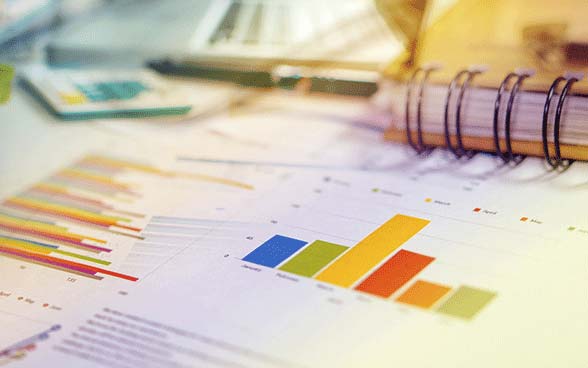Recycling rate
Although waste incineration in Switzerland no longer represents a major environmental burden in terms of disposal, it is desirable that as large a proportion as possible of the municipal waste is collected separately and recycled. This reduces the consumption of resources and saves energy. The recycling rate thus indicates how large the proportion of municipal solid wastes is that is consigned to resource-conserving disposal.
 good
good
 positive
positive
The recycling rate doubled between 1985 and 2014 and has remained largely stable since then. Today, more than half of all municipal solid wastes are already collected separately. This strong increase can be attributed, among other things, to the introduction of the refuse bag charge in the 1990s. This created a financial incentive for collecting separately and at the same time more easily reachable collection points were created. The potential of separate collections in Switzerland could be further optimised in certain areas, (other possible optimisation procedures such as the recycling of plastics from agriculture, the construction industry and from households are currently being considered), but is on the whole at a very high level. For this reason status and development are evaluated positively. The satisfactory development in recycling should not however conceal the fact that the avoidance of waste remains the most energy- and resource-friendly solution.
- Related indicators
- Municipal solid waste
- Separat gesammelte Abfälle
Eurostat produces statistics for the participating countries on the quantities of separately collected and incinerated municipal solid waste for each type of material. Switzerland compares very well with other European countries because of its well developed and efficient collection operations.
This Indicator surveys the quantity of separately collected municipal solid waste (paper and board, compostable wastes, glass containers, aluminium, PET beverage containers, sheet steel containers, textiles, batteries and electroscrap) as a percentage of total municipal solid waste (MSW). Every year, FOEN collects data on the quantity of MSW incinerated at the 29 Swiss MSW incineration plants. The responsible, in some cases private-sector, collection organizations collect data on quantities of separately collected MSW fractions such as paper, glass or electroscrap and report annually to FOEN. For beverage containers, FOEN commissions the Swiss association for environmentally sound beverage containers (Schweizerischer Verein für umweltgerechte Getränkeverpackungen SVUG) to produce annual statistics.
| Targeted trend | Initial value | Final value | Variation in % | Observed trend | Assessment |
|---|---|---|---|---|---|
| Growth | Average 2000-2002 | Average 2021-2023 | 12.53% | Growth | positive |
Further information







